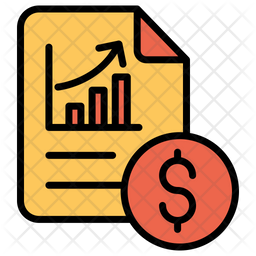
Audiology Devices Market: by Product (Hearing Aids, (In-the-Ear Hearing Aids (ITE), Receiver-in-the-Ear (RITE), Behind-the-Ear (BTE), and Canal Hearing Aids (CHA)), Cochlear Implants, BAHA/BAHS, and Diagnostic Devices (Tympanometers, Otoscopes, and Audiometer)), by Disease Type (Otosclerosis, Meniere’s Disease, Acoustic Tumors, Otitis Media, and Others), and by End User (Hospitals, Ambulatory Surgical Centers, and Speciality Clinics)-Global Industry Analytics, COVID-19 Business Impact, and Trends, 2020 – 2029
- TBI452942
- July 24, 2020
- Global
- 132 pages
- SAC Insights
Abstract
The report covers forecast and analysis for the global audiology devices market. The study provides historic data from 2016 to 2018 along with forecast from 2019 to 2025 based on revenue (USD Million). In-depth secondary research is used to ascertain overall market size, top industry players, top products, industry associations, etc. Macro-economic indicators such as healthcare industry outlook, healthcare spending, research funding, GDP along with company websites, company annual reports, white papers, financial reports and other sources have also been considered to arrive at the indicated market numbers.
Electronic devices which are used by the audiologists to diagnosis and treat hearing impairment or hearing loss are known as audiology devices. These are also used to monitor and study hearing. Frequent hearing loss or hearing impairment are often associated with old age and is growing problem globally. Cost-effective and efficient devices, technology advancements, and widespread acceptance of novel devices among the elderly population are likely to fuel the market growth for audiology devices. These devices today are being equipped with smart sensors that offer more ease to the users. Besides, wireless hearing aids are being manufactured by many companies which are also gaining traction in the audiology devices market.
The study provides a decisive view on the audiology devices market by segmenting the market based on product, disease type, end user, and regions. All the segments have been analyzed based on present and future trends and the market is estimated from 2019 to 2025. Based on product the market is segmented into hearing aids, cochlear implants, BAHA/BAHS, and diagnostic devices. The hearing aids market is further segmented into receiver-in-the-ear (RITE), in-the-ear hearing aids (ITE), behind-the-ear (BTE), and canal hearing aids (CHA). The diagnostic devices market is further segmented into tympanometers, otoscopes, and audiometer. The hearing aids dominated the market while cochlear implants are likely to grow at high CAGR owing to the reduced risk of infection, innovation in implantation techniques, operating time, complications, and it also improves patient's ability to hear.
Based on disease type the market is segmented into otosclerosis, otitis media, Meniere’s disease, acoustic tumors, and others. Meniere’s disease segment held major share of the market in 2018 and is likely to grow at high CAGR in the forecast period. As per the stats provided by the American Hearing Research Foundation, approx. 0.2% population have Meniere’s disease and almost 46,000 new cases of the disease are diagnosed every year in the U.S. alone. Based on end user the market is segmented into ambulatory surgical centers, hospitals, and speciality clinics. Speciality clinics segment held major share of the market in 2018 and is likely to grow at high CAGR in the forecast period. Regional segmentation includes the current and forecast demand for Asia Pacific, North America, Latin America, Europe, and Middle East & Africa with its further bifurcation into major countries.
The study also includes drivers and restraints for the audiology devices along with the impact they have on the demand over the forecast period. Besides, the report includes the study of opportunities and trends available in the audiology devices market on global level. As per the stats provided by WHO, nearly about 10% of the populace globally suffers from hearing impairment. Besides, almost 22% of the geriatric and adult population is affected by hearing loss, majority of these cases are found in under developed countries. This incompetence to communicate around is causing frustration and social exclusion and a feeling of loneliness among the aged population. To curb the unmet demand for these audiology devices the manufacturers are developing devices that can be inserted inside the ear, making them invisible, in order to overcome the social stigma connected with such devices. Moreover, technological advancements like digital noise reduction and speech enhancement are likely to facilitate the growth of market for audiology devices globally.
The report also provides company market share analysis in order to give a broader view of the key players in the market. Industry insights and information is delivered in the required format. SAC develops a list of industry players (manufacturers), distributors, retailers and industry experts. Some of the players included in audiology devices market are Benson Medical Instruments, MED-EL, William Demant, AMBCO, Cochlear, Nurotron Biotechnology, Sivantos, WIDEX, Sonova, MedRX, Medtronic, Starkey Hearing Technologies, and GN Store Nord.
The report segments the audiology devices market as follows:
Global Audiology Devices Market: Product Segment Analysis
Hearing Aids
In-the-Ear Hearing Aids (ITE)
Receiver-in-the-Ear (RITE)
Behind-the-Ear (BTE)
Canal Hearing Aids (CHA)
Cochlear Implants
BAHA/BAHS
Diagnostic Devices
Tympanometers
Otoscopes
Audiometer
Global Audiology Devices Market: Disease Type Segment Analysis
Otosclerosis
Meniere’s Disease
Acoustic Tumors
Otitis Media
Others
Global Audiology Devices Market: End User Segment Analysis
Hospitals
Ambulatory Surgical Centers
Speciality Clinics
Global Audiology Devices Market: Regional Segment Analysis
North America
U.S.
Europe
UK
France
Germany
Asia Pacific
China
Japan
India
Latin America
Brazil
Middle East and Africa
Table of Contents
Request Table Of Content
Click To Request Sample
Chapter 1. Preface
1.1. Report Description and Scope
1.2. Research Scope
1.3. Research Methodology
1.3.1. Market Research Process
1.3.2. Market Research Methodology
Chapter 2. Executive Summary
2.1. Audiology Devices Market, 2016-2025 (USD Million)
2.2. Audiology Devices Market: Snapshot
Chapter 3. Audiology Devices Market - In
| read more...



















